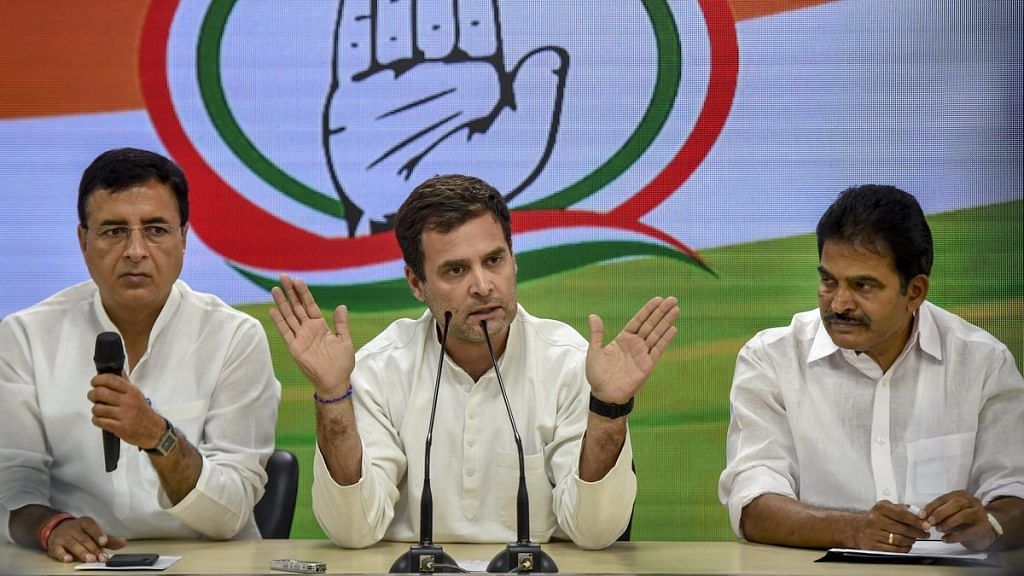There was time under the Congress government when the media could truly perform its function as a pillar of democracy. The press was free to expose and question the ruling party. And it often did. Under the Narendra Modi-led NDA government, the media is also free — but just to attack the Congress party.
Its autonomy is now locked in the same cage as that of the Reserve Bank of India, the Election Commission and the Central Bureau of Investigation.
If the economic crisis India is facing today were to happen under former PM Manmohan Singh, the media would have gone after him tooth and nail.
But under the Modi government, anything can happen. And pass without enough scrutiny. Like the abrogation of Article 370 and the passing of the triple talaq bill. And that is why Indian democracy is now facing its most uncertain era.
Also read: Few anchors bravely questioned Modi’s Kashmir move – Arnab Goswami was not one of them
A responsible media
It is not as if the spectre of uncertainty is haunting India for the first time. There were periods of inexplicable chaos in the 1970s and the 1990s. But, at the time, most systems and institutions were in place and, by and large, had credibility. Let me give some examples to illustrate this.
For instance, the authority of the Reserve Bank of India was not questioned. The autonomy of the RBI and its monetary policies were taken for granted, although occasionally there was some criticism. The post of the Governor of the RBI was sacrosanct. The high courts and the Supreme Courts enjoyed respect and considerable anonymity.
The media too had visible freedom. The journalists protested publicly whenever they felt their freedom was being threatened by the state. For instance, in 1988, when the Rajiv Gandhi government rushed the defamation law through Lok Sabha, Indian newspapers and editors staged massive protests.
Aside from the dark episode of Emergency, there was autonomy. The nationwide railway strike in 1974 the Bhagalpur blindings in 1977, the 1981 ‘journalistic coup‘ of The Indian Express in the trafficking market were widely reported.
Even the cement quota scandal during A.R. Antulay’s chief ministership in 1980-81 and Gujarat CM Chimanbhai Patel’s irregularities were widely reported, without fear. Such stories exposed and challenged the government. Even the 2G spectrum scam or Coal scam during the UPA regime and massive mobilisation organised by ‘India against Corruption’ in 2011 were top stories in TV and print media at the time. The media could trail the state.
Ram Jethmalani to S. Gurumurthy to Arun Shourie — there were lawyers, economists and journalists questioning the state at every step through the media.
Also read: Narendra Modi interview no exception. Indian media rarely asks PMs tough questions
A promotional media
The media continues to attack the Congress even today, when they are not in power, for their past scams and present predicament. But it is the Modi government that enjoys unique protection — even promotion — from the media. The very credibility of the media and Indian journalism is at stake.
Today, all institutions seem to be acting on the will of the government — media, the judges, the RBI, the IB, the CBI and the NIA, the EC, National Statistics Bureau, the Enforcement Directorate and the University Grants Commission.
Today, despite the falling rupee, the flight of foreign capital, imminent collapse of the automobile industry, acute discomfort and frustration in the business community and the frightening scale of unemployment, the Modi government faces no major flak on economy. These stories get reported, but never become obstacles for the PM. Article 370, triple talaq, Ram Mandir and Uniform Civil Code are perceived as more serious and urgent.
Indeed, the impression given by media and other institutions is that though there are some glitches, by and large, everything is normal.
Also read: The weakening of India’s institutions under Modi was last seen during Indira’s time
Que sera sera
The Lok Sabha and the Rajya Sabha passed the maximum number of bills in the very first session after the 2019elections. The electoral processes in the states, the stock markets, the cricket matches, PM’s frequent visits abroad—everything is going smoothly and there is nothing to worry. The PM’s image is shining even more after the daring that he and Amit Shah showed in scrapping Article 370.
What will happen in Kashmir, once the military command is withdrawn and curfew lifted? What is the future of the Congress party? Indeed, what is the role of the opposition parties now? What is the fate of the economy? Will there be war between India and Pakistan? Will China support Pakistan to the hilt? What will the US do? What about climate change? The decade 2020-2030 appears to be alarmingly uncertain.
The intellectuals, academics, journalists, artists, even industrialists are feeling anxious, concerned, even fearful. When John Kenneth Galbraith wrote The Age of Uncertainty in the early 1970s, the world around him was much more stable, compared to today’s eerie atmosphere. Today, even Galbraith would not have been able to predict Donald Trump or Vladimir Putin or Narendra Modi’s next move.
But he would have said:
“Que Sera, Sera,
whatever will be, will be.
The future is not ours to see,
Que Sera, Sera.”
